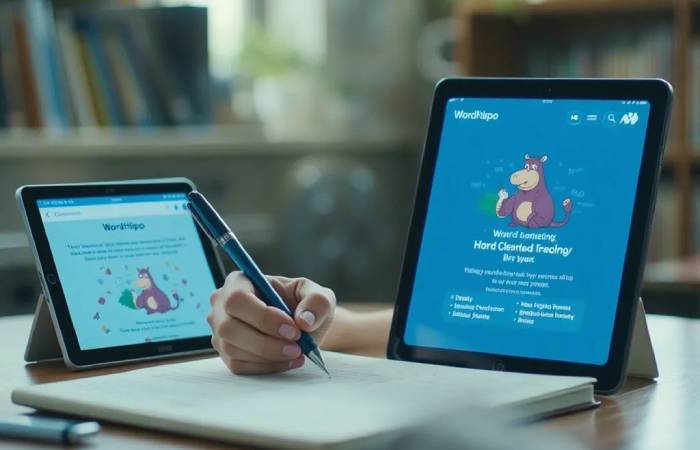With the advancement in software engineering, the efficiency of testing scenarios is becoming more important. JUnit is one of the most reliable testing frameworks for Java application development. It provides Java programmers with a convenient and structured way of carrying out tests, localizing issues to solve them faster, constantly checking the code, and producing quality software.
Suppose you are new to testing or an experienced developer who decided to extend his/her skills to include testing. In that case, you will like this guide as it covers the basic setup of JUnit to the most essential tips on how to develop efficient unit tests. So, without further ado, let’s get down to the business and start discovering the fundamentals of JUnit testing for Java.
What is JUnit?
JUnit is a unit testing framework that can be used on any Java-based software application without the need for license fees. Initially created by Erich Gamma and later expanded upon by Kent Beck, JUnit is regarded as an indispensable tool for Java – it allows developers to check that their code works in practice. JUnit’s modular, repeatable structure makes it easier to catch bugs early and maintain higher code quality over time.
Key benefits of using JUnit include:
- Automation: JUnit enables you to easily automate repetitive tests, saving time and ensuring accuracy across multiple test runs. This allows developers to run tests frequently, helping maintain code quality with every update.
- Structure: JUnit helps organize tests in a way that enhances readability and maintainability, making it simpler to locate and update specific tests as your project grows. This structured approach keeps your testing streamlined and manageable.
- Reliability: By detecting errors early in the development process, JUnit reduces the likelihood of bugs reaching production. Early detection leads to more stable software and builds confidence in the reliability of your application.
Setting Up JUnit in Your Project
First of all, to run JUnit, you should be familiar with the Java language and an IDE like IntelliJ IDEA or Eclipse. Most existing IDEs for developing software applications support the simple inclusion of JUnit into projects with the help of build tools like Maven and Gradle.
Here’s how you can set up JUnit 5 in your project:
Using Maven:
- Add JUnit 5 to your `pom.xml` dependencies:
“`xml
<dependency>
<groupId>org.junit.jupiter</groupId>
<artifactId>junit-jupiter-engine</artifactId>
<version>5.8.1</version>
<scope>test</scope>
</dependency>
“`
Using Gradle:
- Add the JUnit 5 dependency to your `build.gradle` file:
“`groovy
dependencies {
testImplementation ‘org.junit.jupiter:junit-jupiter:5.8.1’
}
“`
JUnit 4 vs. JUnit 5:
While the work on JUnit 4 continues, many improvements have been made with JUnit 5. These include the framework’s modularity, support for features offered with Java 8+, and more flexible testing structures.
Creating Your First JUnit Test Case
JUnit makes creating test cases easy with its use of annotations to mark test-related actions. Here’s a rundown of some critical JUnit annotations and their purposes:
- `@Test`: Marks a method as a test method.
- `@BeforeEach` and `@AfterEach`: Run code before and after each test method, which makes it useful for code before and code after, specifically setup and cleanup.
- `@BeforeAll` and `@AfterAll`: Code that is executed once per test class should be used to initialize resources required by multiple tests.
Let’s establish a straightforward example. Suppose we have a `Calculator` class with an `add` method:
“`java
public class Calculator {
public int add(int a, int b) {
return a + b;
}
}
“`
To test it with JUnit, we can create a `CalculatorTest` class:
“`java
import org.junit.jupiter.api.Test;
import static org.junit.jupiter.api.Assertions.assertEquals;
public class CalculatorTest {
@Test
public void testAdd() {
Calculator calculator = new Calculator();
assertEquals(5, calculator.add(2, 3));
}
}
“`
Running this test will verify that `add(2, 3)` returns `5`. If the result is different, JUnit will mark the test as failed, making it easy to spot issues.
Writing Reliable Unit Tests with Assertions
Assertions are vital for verifying test results. They allow you to check that your code returns expected values. Here are some commonly used assertions:
- `assertEquals(expected, actual)`: Checks if two values are equal.
- `assertTrue(condition)` and `assertFalse(condition)`: Verify boolean conditions.
- `assertNull(object)` and `assertNotNull(object)`: Check if an object is `null` or not.
- `assertThrows(exception.class, () -> { … })`: Ensures that a specific exception is thrown.
Example:
“`java
@Test
public void testDivide() {
Calculator calculator = new Calculator();
assertThrows(ArithmeticException.class, () -> calculator.divide(10, 0));
}
“`
This test ensures that dividing by zero throws an `ArithmeticException`.
Structuring Test Cases: Best Practices
Effective test case structuring is crucial for successful QA testing. Well-structured test cases enhance readability, maintain consistency, and improve overall testing accuracy. Here are some best practices to help you design and structure test cases that deliver reliable results:
1. Define Clear Objectives
- Begin with the purpose of the test case. Specify what the test aims to validate, whether it’s functional behavior, user experience, or specific edge cases.
- Setting objectives helps the tester understand the expected outcomes and align each case with the overall testing strategy.
2. Use Consistent Naming Conventions
- Create a standard naming convention for test cases across all projects. Include keywords that convey the module or feature name, test type, and outcome, such as “Login_Page_Successful_Login.”
- Consistent naming improves readability and helps testers quickly identify the purpose of each test case.
3. Organize Test Cases by Categories
- Group related test cases to avoid redundancy and ensure thorough coverage. Categories might include functional, integration, usability, and performance tests.
- Organized test cases streamline the testing process and make it easier to find and run relevant tests as needed.
4. Keep Test Cases Simple and Focused
- Each test case should focus on a single aspect of functionality to avoid confusion and reduce the risk of missing details.
- Simple and focused test cases are more straightforward to execute, debug, and maintain, especially in complex test suites.
5. Use Descriptive Steps and Expected Results
- Outline each action clearly and concisely, using numbered steps to guide the tester through the process.
- Include expected results after each step to clarify the outcome the tester should observe. Descriptive steps and results reduce ambiguity and increase testing accuracy.
6. Include Prerequisites and Assumptions
- List any conditions that must be met before running the test, such as setup requirements, configurations, or user permissions.
- Highlighting prerequisites helps avoid test failures due to unmet conditions, saving time and reducing frustration.
7. Incorporate Test Data Requirements
- Identify any specific data inputs needed for the test case, such as user credentials, input values, or file types.
- Providing precise data requirements improves test accuracy and prevents errors caused by invalid data entries.
8. Implement Reusable Test Case Components
- Recognize an actionable that can be used by more than one test, such as logging in, going to a module, or setting an environment variable.
- Reusable components reduce redundancy and simplify maintenance when updating test cases across multiple scenarios.
9. Review and Update Test Cases Regularly
- Periodically review and revise test cases to keep them aligned with changing requirements and application updates.
- Regular reviews help maintain test case relevance and ensure comprehensive test coverage over time.
10. Document Expected and Actual Outcomes
Alongside expected results, capture any deviations that may occur during testing. Noting both expected and actual results helps diagnose issues and improves the feedback loop to development teams.
If these approaches for creating test cases are adopted, the QA teams are more likely to have clean, well-organized, and documented test cases that help them deliver a quality product with an increased degree of efficiency. Test cases are also useful in both manual and automatic test situations because well-developed test cases can even help produce more efficient automated tests.
Parameterized Tests in JUnit
JUnit enables one to develop tests that can run on different data sets, making it easier to repeat a test on various data sets. This is especially useful when testing a method for different inputs of variation.
Example:
“`java
import org.junit.jupiter.params.ParameterizedTest;
import org.junit.jupiter.params.provider.CsvSource;
@ParameterizedTest
@CsvSource({
“1, 1, 2”,
“2, 3, 5”,
“3, 7, 10”
})
public void testAddParameterized(int a, int b, int expected) {
Calculator calculator = new Calculator();
assertEquals(expected, calculator.add(a, b));
}
“`
Testing Exceptions and Edge Cases
To make your tests robust, you should cover both standard and edge cases. Testing for exceptions is crucial to ensure the application handles errors gracefully.
Example:
“`java
@Test
public void testSubtractNegative() {
Calculator calculator = new Calculator();
assertThrows(IllegalArgumentException.class, () -> calculator.subtract(-5, 3));
}
“`
Mocking Dependencies with Mockito
Mockito is a well-known testing framework used to mock different dependencies in unit testing. This is handy for isolating the class under test as it addresses its behavior.
Example with Mockito:
“`java
import static org.mockito.Mockito.*;
@Test
public void testCalculateDiscount() {
DiscountService discountService = mock(DiscountService.class);
when(discountService.applyDiscount(100)).thenReturn(90);
Calculator calculator = new Calculator(discountService);
assertEquals(90, calculator.calculateDiscountedPrice(100));
}
“`
Running and Managing JUnit Tests
JUnit tests can be run directly from most IDEs or through the command line. To organize tests effectively, group them by functionality or feature. This helps in managing larger test suites and makes debugging easier.
Continuous Integration and JUnit Testing
If JUnit tests are integrated into the CI, then the tests run alerts on failure upon receiving a new commit and a new bug found in the system. This is a great way to begin the project.
For example, to run JUnit tests in Jenkins, go to configure on your Jenkins job, add another build step and tell it to run `mvn test`, which is in Maven format and it automatically runs all of your JUnit tests.
Solutions such as LambdaTest can be incorporated into the CI process to automate cross-browser tests. LambdaTest offers a cloud-based testing platform that allows you to execute JUnit tests across multiple browsers and operating systems without the demands of maintaining complex local tools. By enabling you to test on a web browser online, LambdaTest’s parallel testing feature saves considerable time, allowing quick feedback to your development team.
It also comes with real-time testing features once integrated with the JUnit platform to allow a developer to watch a test run and correct problems in live sessions. LambdaTest presents comprehensive logs, screenshots, and post-test videos, making it easier to detect and solve any cross-browser incompatibility. This reliable framework also incorporates compatibility with major CI/CD systems, through which JUnit tests can run in the continuous deployment process. LambdaTest provides you with the resource that ensures that all your Java applications run well on various environments, thus improving the tests for your applications.
Conclusion
Mastering JUnit is a valuable skill for any Java developer, whether you’re a beginner in testing or an experienced programmer expanding your expertise. JUnit’s structured approach, combined with features like assertions, parameterized tests, and exception handling, allows you to create reliable, maintainable unit tests. By following best practices for test structure and using tools like Mockito for mocking dependencies and LambdaTest for cross-browser testing, you can ensure your tests validate functionality accurately while catching edge cases and cross-platform issues early on.
Integrating JUnit tests into your development process, especially with CI/CD pipelines, further enhances test reliability and supports faster, more confident releases. Embracing JUnit testing practices helps you deliver high-quality software and build a solid foundation for continuous improvement in your projects.
Ultimately, building proficiency in JUnit will not only streamline your testing process but also foster a proactive approach to code quality and application stability. As you refine your testing strategies and leverage JUnit’s capabilities, you’ll be equipped to create robust, scalable Java applications that meet modern software standards and provide a better user experience.
Also Read : Top Benefits of Drinking Filtered Water











